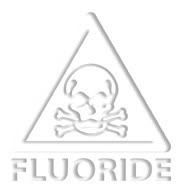There was a news release by Seth Borenstein, AP Science Writer, entitled “Global warming’s toasty water connection to Gustav.” Among the statements in the text are
“Global warming has probably made Hurricane Gustav a bit stronger and wetter, some top scientists said Sunday, but the specific connection between climate change and stronger hurricanes remains an issue of debate.”
“Measurements of the energy pumped into the air from the warm waters — essentially fuel for hurricanes — has increased dramatically since the mid 1990s, mostly in the strongest of hurricanes, according to a soon-to-be published paper in the journal Geochemistry, Geophysics, Geosystems by Kevin Trenberth, climate analysis chief at National Center for Atmospheric Research in Boulder, Colo.”
“Warmer water makes the surface air warmer, which means it could contain more moisture. That means more hot moist air rises up the hurricane, serving as both fuel for the storm and extra rainfall coming back down, said Peter Webster, professor of atmospheric sciences at Georgia Tech.”
Both the article and the statements by the scientists, however, mislead the public into thinking there is a clear relationship between global warming and Atlantic hurricane activity. This is a gross oversimplification of hurricane dynamics. Hurricanes respond to their immediate environment, not a global average increase in heat!
The primary requirements for hurricanes in the Atlantic Ocean Basin can be summarized as follows:
1. A preexisting source of circulation (more precisely a source of horizontal vorticity; examples of vorticity in the North American region, including part of the tropics and subtropical Atlantic can be viewed at http://www.rap.ucar.edu/weather/model/gfs000hr_500_vrt.gif). These preexisting circulations can occur, for example, from mesoscale convective systems that exit the west coast of Africa (with origins in the Ethiopian Highlands) which can develop into the so-called Cape Verde hurricanes. Circulations can also occur associated with the southern end of cold fronts as they enter the Gulf of Mexico, Caribbean and Atlantic Ocean.
2. A moist tropospheric atmosphere in which the circulation is embedded, which provides a favorable environment for sustained deep cumulonimbus clouds (the moist environment for deep cumulus convection in the Gulf of Mexico, Caribbean and tropical Atlantic can be viewed at http://www.rap.ucar.edu/weather/model/gfs000hr_sfc_pwat.gif). A deep moist layer provides a favorable environment for prolonged deep cumulus convection to coexist with the circulation.
3. Weak changes of the large scale horizontal wind speed with altitude (i.e. low vertical wind shear). The upper tropospheric winds, which are an appropriate measure of vertical wind shear, can be viewed at http://www.rap.ucar.edu/weather/model/gfs000hr_250_wnd.gif. Low vertical wind shear permits the accumulation of heat from mesoscale clusters of deep cumulus so that pressures fall in the center of the circulation, thereby favoring further deep cumulus convection.
4. Warm ocean temperatures at or above about 26C (79F) in the upper tens of meters or more (the sea surface temperatures in the in the Gulf of Mexico, Caribbean and tropical Atlantic can be viewed at http://www.osdpd.noaa.gov/PSB/EPS/SST/data/usatlant.cf.gif ). The warm ocean provides heat and moisture fluxes into the deep cumulus convection, which is the fuel for the hurricane. The warm ocean also provides the moisture to sustain a moist troposphere. The temperatures in the Atlantic Basin are above average at present (i.e. see http://www.osdpd.noaa.gov/PSB/EPS/SST/data/anoma.9.1.2008.gif), although elsewhere in a number of regions of the tropics, the sea surface temperatures are below average (e.g. see http://www.osdpd.noaa.gov/PSB/EPS/SST/data/anomg.9.1.2008.gif).
The temperature anomalies in the upper ocean along two crossesections in the tropics can be viewed at http://www.ecmwf.int/products/forecasts/d/charts/ocean/real_time/yzmaps!20080901!Anomaly!Temperature!30W!/ and http://www.ecmwf.int/products/forecasts/d/charts/ocean/real_time/xzmaps/. These clearly illustrate the regional spatial structure of the anomolies.
For the track of the hurricanes (e.g. see for an example of model predictions), they move in response to the larger scale winds which are associated tropospheric troughs and ridges, such as illustrated for 500 mb at http://www.rap.ucar.edu/weather/model/gfs000hr_500_wnd.gif.
These prerequisites for hurricane development and the explanation for their movement are discussed in
Pielke, R.A., 1990: The hurricane. Routledge Press, London, England, 228 pp.
Pielke, R.A., Jr. and R.A. Pielke, Sr., 1997: Hurricanes: Their nature and impacts on society. John Wiley and Sons, England, 279 pp.
What this short summary tells us is that hurricanes develop and move in response to regional weather features, not a global average warming!
Moreover, as has been discussed on Climate Science frequently, humans are altering circulation in many ways beyond that associated with global average heat changes (e.g. see). Indeed, in one study that focused on the tropics and subtropics (see), we found from observations of the spatial distribution of human-caused aerosols in the atmosphere in the lower latitudes, that the aerosol effect on atmospheric circulations, as a result of their alteration in the heating of regions of the atmosphere, is 60 times greater than due to the heating effect of the human addition of well-mixed greenhouse gases!
The focusing on global warming as the reason for any hurricane (or making it more likely to occur or become more intense) ignores that natural variations are not only more important than indicated by the AP news story, but also that the human influence involves a diverse range of first-order climate forcings, including, but not limited global warming [which, of course, has not occurred since at least mid-2004!].
The bottom line conclusion is that the claim of a direct linkage between a global average metric (i.e. global warming) and hurricanes fails to accurately communicate that the hurricanes develop and respond to regional weather patterns. If there are to be skillful predictions of how natural and human caused climate variability and change affect hurricanes, it must have a regional focus.











